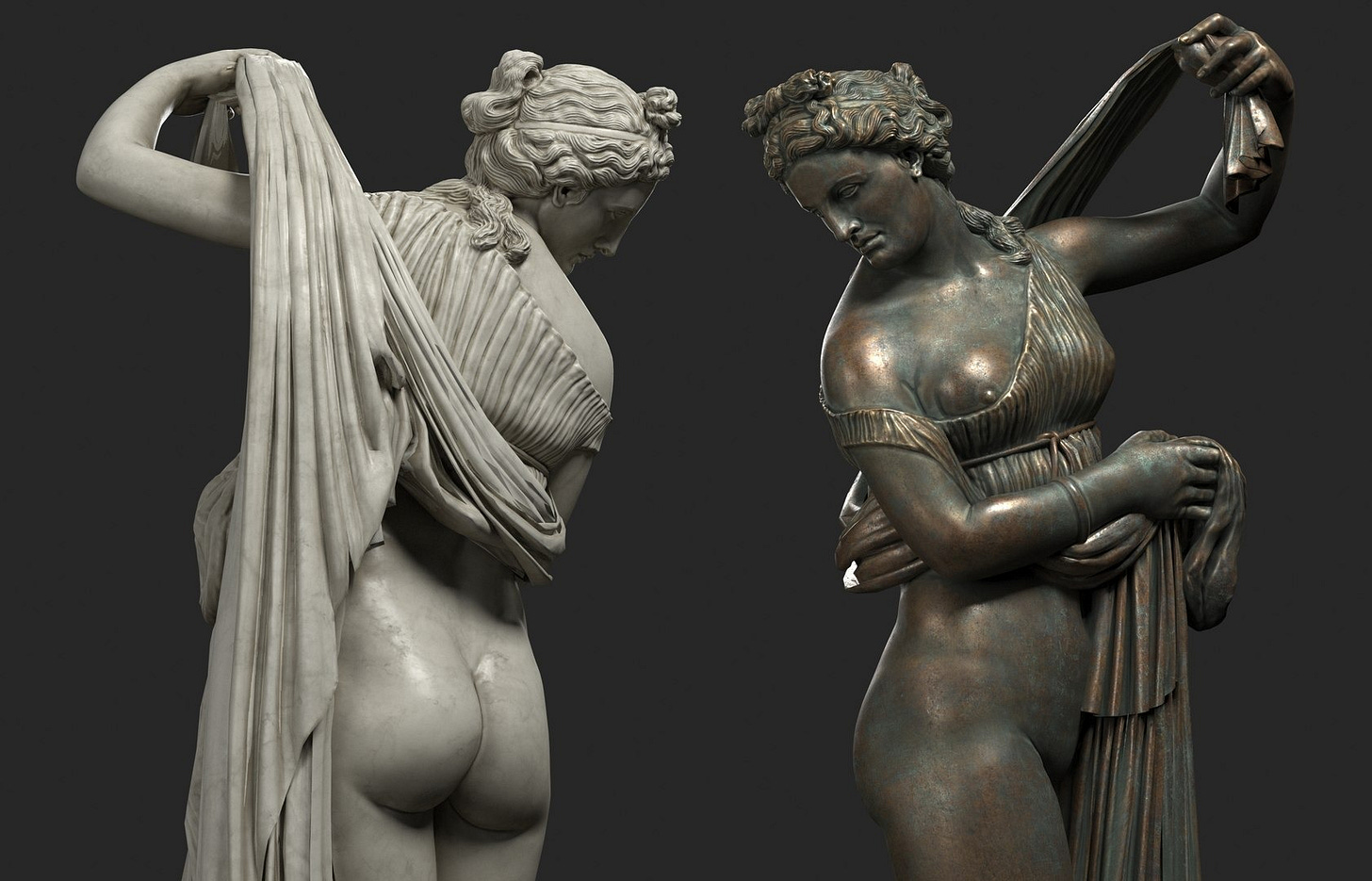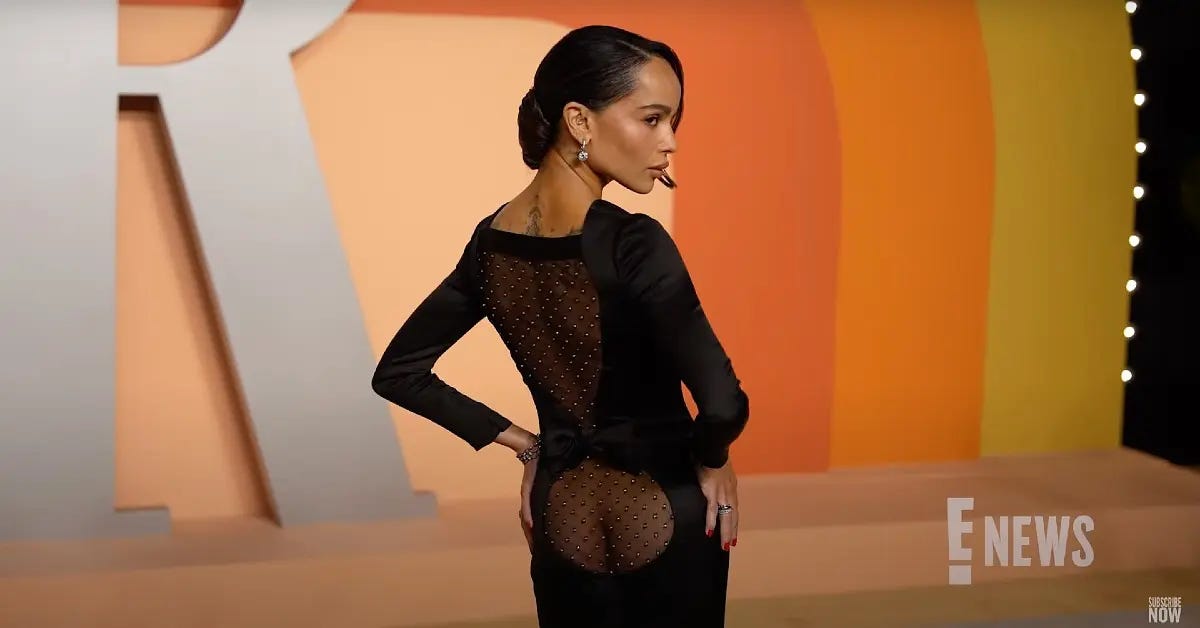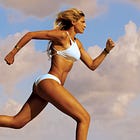Long Live the Booty 🍑
From Olivia Wilde to Zoë Kravitz, a sculpted backside isn't just a fashion statement, it's a signal of strength and vitality.

At the recent Oscars, I couldn’t help but notice a cheeky trend on the red carpet: the sculpted (and exposed) backside.
At the Vanity Fair party, Olivia Wilde posed in a sheer white Chloé gown, a boho look that showed off her camera-ready curves from behind.
And, Zoë Kravitz, in a sleek Saint Laurent dress, offered a bold peek-a-boo cutout that framed what can only be described as tasteful butt cleavage.
In my past life working in fashion, my attention would have focused on the clothes. But now, as a health optimization coach, my perspective has shifted from admiring aesthetics alone to appreciating body composition (and its impact on wellbeing).
These days I’m more likely to say, “strong glutes.”
Reading this substack is an investment in your health. Help me continue to create this content and grow this community—we are rebelling and redefining what it means to “be well.”
A perky, round derrière isn’t just a red carpet flex — it’s a primal marker of virility and key measure of longevity. The gluteus maximus, the body’s largest and most powerful muscle, has always represented strength and stability.
Our attraction to a “well-shaped bum” is rooted in evolutionary biology and linked to perceptions of fertility. And it’s not just about women — a well-built male backside quietly signals power and physical capability.
Attraction, it turns out, often follows biology.
Longevity experts like Dr. Peter Attia and Dr. Gabrielle Lyon remind us that muscle is medicine, and the glutes are central to how we age — supporting posture, balance, glucose metabolism, and injury prevention.
The problem? Modern life is weakening them. Too much sitting and too little training leads to what’s called Dead Butt Syndrome (yes really) — a condition where your body forgets how to properly activate your glutes. Other muscles compensate, increasing risk of pain, dysfunction, and mobility loss.
In a culture fixated on sculpted backsides, it’s easy to view glutes purely through an aesthetic lens. But the reality is that many of us are battling gluteal amnesia, a modern phenomenon where prolonged sitting weakens our brain-body connection causing our strongest muscle group to go offline at the expense of our long term health.
We might joke about a “pancake ass,” but the real loss is functional strength, the kind that protects against falls and keeps metabolism humming.
The good news? Glute strength can absolutely be rebuilt with intentional training.
Top Glute-Building Exercises
My personal trainer Kolton Oie recommends these exercises to achieve what he calls, “glutes of glory.” Reach out to him [here] to create a customized program.
Hip Thrusts
A great move for maximum glute activation. Load up a barbell and thrust through your heels to lift your hips from the floor toward the ceiling.
Romanian Deadlifts (RDLs)
A forward hip-hinging movement with a flat back and weights in each hand that targets both glutes and hamstrings.
Bulgarian Split Squats
A killer squat on one leg where your rear foot is elevated on a bench. This move challenges your glutes, quads, and stability in a major way.
Glute Kickbacks
A targeted movement where you extend one leg straight back from a hinged or all-fours position, isolating and activating the glutes to build strength and shape.
Incline Walking
A low-impact but incredibly effective way to build glute strength. Set the treadmill to a steep incline and just walk.
Sprint Intervals
Quick bursts of speed engage your glutes explosively and build both strength and cardiovascular fitness.







Thank you for connecting the fashionable backside to the back half of life. While I’m a fellow weights enthusiast because of a sheer love of the sport (CrossFit), I know deep down it’s also thanks to Greg Glassman’s brainwashing, speaking to these truths about functional fitness and longevity. There’s no greater feeling than being strong.
Having strong glutes is SUPER important for our hips, too. After being diagnosed with arthritis in my hips, my PT has me doing some other simple- but effective!- band exercises. Clamshells, first and foremost, really helped to alleviate the pain. Additionally, putting a band around your feet, and then doing some lunges (out to the side, then back at a diagonal, and then straight back) work your 🍑 more than you’d imagine!!